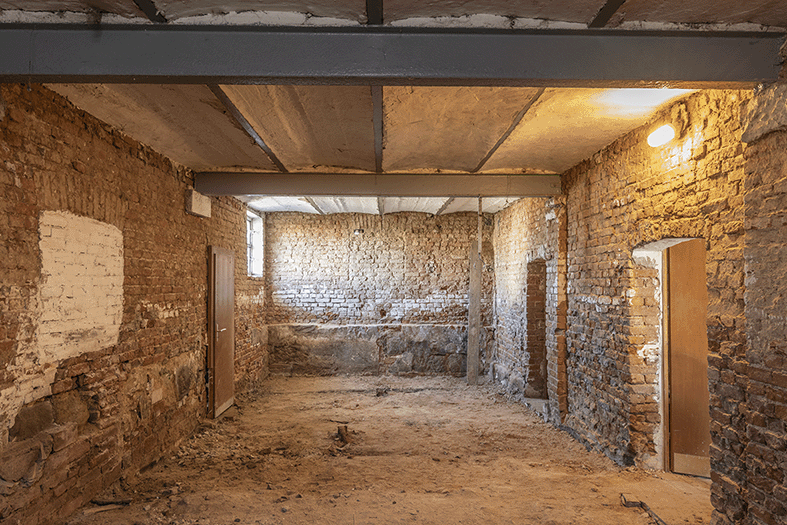An old farmhouse in Switzerland attracted the attention of building owner Maria Nitsch in 2019. However, the problems were many: damp, crumbling masonry with heavy salt deposits and a lack of insulation needed to be renovated. After much research, the architect decided to use Multipor ExSal Therm desalination panels for the interior renovation. The brick walls could thus be repaired and insulated in one step.
From stable to home and office
In addition to a spacious living area in the main house, modern office space was to be created in the former stable by February 2021. The core renovation began in summer 2019. Classic interior insulation materials were used for the interior renovation in the main building.
In the former stable, however, a different system had to be used, because no classic interior insulation could be used due to the damp and salt-contaminated walls. The client was looking for a system that would not only remove excess salts but also insulate the affected brick walls at the same time. The choice fell on Multipor.
Multipor ExSal Therm as the solution
For decades, the excreta of the cows and pigs living in the barn had carried salts into the brickwork. Costly and time-consuming drainage and renovation of the masonry seemed inevitable for the building owner until she came across Multipor ExSal Therm boards, which consist of 90 percent pores and are thus ideal for combating salt deposits and moisture.
"The range of renovation plasters is huge, but the idea of having to dry out the entire barn didn't excite me. Then, in the course of my research, Multipor ExSal Therm came to my attention. The prospect of quickly and easily getting dry walls that are also well insulated seemed promising to me," explains Maria Nitsch.
And not without reason. Even with a classic dry-out, there is a risk that not all salt deposits can be removed and crystallize. Sooner or later, this will damage the plaster, which in turn will have to be replaced at great expense. In addition, the barn - in order to be able to serve as office space after the renovation - had to be additionally insulated. Multipor ExSal Therm works in several ways: It reliably removes all salts and moisture from the stable walls, ensures a pleasant indoor climate, is ecological, non-combustible, releases no pollutants and insulates the masonry. The architect thus saves not only time but also a lot of money, while protecting her health and the environment.
